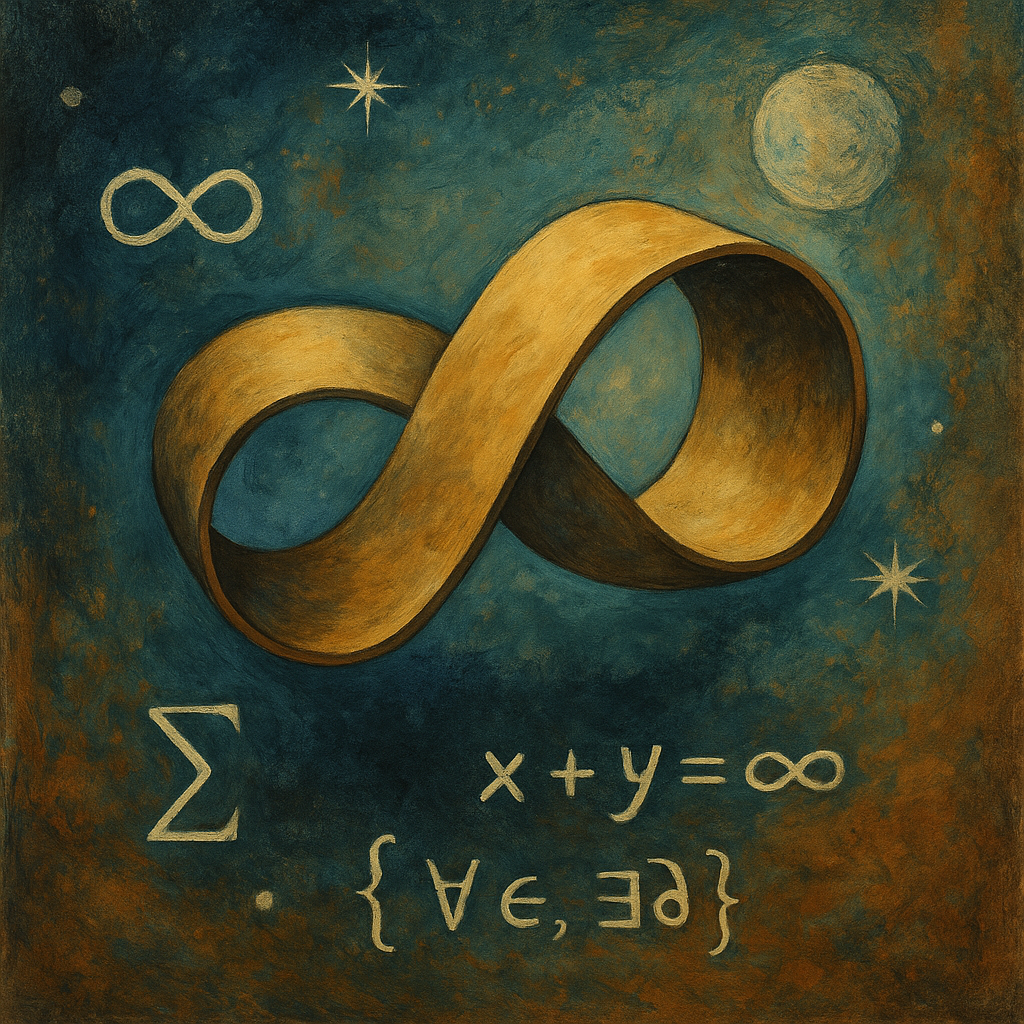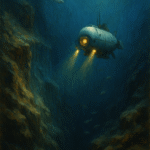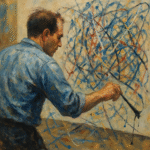Introduction to the Möbius Strip and Its Significance in Mathematics
The Möbius strip is one of the most fascinating structures in mathematics, notable not just for its unique geometric form, but also for its implications in various fields, including topology, art, and engineering. A Möbius strip can be constructed with a simple strip of paper. To create one, take a rectangular strip of paper, give it a half twist, and then join the two ends together. The result is a surface that is non-orientable, meaning that if you start drawing a line down the center and continue, you will return to the starting point, covering both sides of the strip without ever crossing an edge. This unique property leads to a single continuous surface with only one side and one boundary.
Mathematically, the Möbius strip serves as an essential example in the study of topology—a branch of mathematics that focuses on the properties of space that are preserved under continuous transformations. It challenges our traditional views of geometry and space, making it a pivotal element in understanding how shapes and surfaces can behave in unexpected ways.
Additionally, the Möbius strip is often used in mathematical visualization and pedagogy due to its remarkable properties, providing a tangential link to complex mathematical theories such as those found in calculus and algebra. As such, the Möbius strip is not only an object of curiosity but also a fundamental tool that helps bridge intricate mathematical concepts with real-world applications.
The Mathematical Properties of the Möbius Strip
The mathematical significance of the Möbius strip extends beyond its construction. It possesses several interesting properties:
1. Non-Orientability: As previously mentioned, the Möbius strip is a non-orientable surface. Unlike a sphere or a torus, moving in a straight line across its surface does not return you to your original orientation, presenting implications for understanding dimensions and topology.
2. Single-Sided Surface: The fact that it has only one continuous side is a powerful representation of how our understanding of space can be challenged through mathematical constructs.
3. Euler Characteristic: The Möbius strip can be examined through Euler’s characteristic, which is a topological invariant. For the Möbius strip, this invariant presents an interesting case study in the realm of mathematical properties, as it directly links to how mathematicians interpret dimensions and connectivity.
4. Applications in Science and Engineering: The Möbius strip’s properties have practical implications in various domains. For example, it can be utilized in the design of conveyor belts to prevent wear and prolong usage, and has even found its way into advanced areas of physics and engineering, influencing the study of molecular structures.
Philosophical Perspectives on Infinity and Its Implications
Moving from the surface of the Möbius strip into the realm of philosophy, we can unravel deeper insights into infinity and its implications. The concept of infinity has intrigued philosophers for centuries, igniting discussions ranging from metaphysics to epistemology.
Infinity in the Context of Mathematics and Philosophy
In mathematics, infinity is treated as a conceptual number that goes beyond any finite value, often represented with the symbol . Philosophical inquiries around infinity involve profound questions regarding the nature of existence, the universe, and mathematical truths.
1. Actual vs. Potential Infinity: Philosophical discussions often distinguish between two types of infinity: actual infinity (the existence of infinity as a completed set, such as the full set of natural numbers) and potential infinity (the concept of infinity as an ongoing process). This distinction raises questions about how we understand and interact with infinite concepts in both mathematics and real life.
2. Infinity and the Universe: Philosophers like David Hilbert and his paradox of the Grand Hotel challenge our intuitions about size and quantity. In his thought experiment, a hotel with infinitely many rooms can still accommodate new guests despite being ‘full’, revealing surprising implications about the nature of infinity in the cosmos itself.
3. Infinite Realities: Philosophically, the Möbius strip can serve as a metaphor for infinite realities or dimensions. If one endeavors to think beyond the limitations of our three-dimensional existence, the Möbius strip symbolizes interconnectedness, suggesting the complexity of realities that might exist concurrently within a singular structure. This perspective has influenced modern philosophical thought, particularly around consciousness and the nature of reality.
Interconnections Between Science and Philosophy Regarding Infinity
The bridging of science and philosophy regarding the concept of infinity can be observed across various disciplines, especially within theoretical physics and awareness of consciousness. The intersection of these fields provides fertile ground for increasingly intricate questions about the universe and our perception of existence.
Consciousness and Mathematical Indeterminacy
Contemporary discussions in consciousness studies reveal a connection between mathematical abstraction and our understanding of thought. Just as the Möbius strip challenges our perception of orientation and space, the concept of consciousness can be seen through similarly complex frameworks. Are our thoughts distinctly linear, or do they exist in a multi-dimensional space akin to a Möbius strip? This question leads to significant inquiries about how conscious thought operates and perpetuates understanding.
The Infinite Universe and Quantum Mechanics
In the realm of physics, the question of whether the universe is infinite or finite raises profound philosophical implications. Quantum mechanics introduces complexities that challenge classical definitions, especially relating to infinity. The phenomena of superposition and entanglement, phenomena that resist straightforward explanations, may include infinite possibilities existing simultaneously. This aligns with philosophical musings about the nature of reality, as understood through mathematical constructs like the Möbius strip.
Learning from Paradoxes
Both mathematics and philosophy thrive on confronting paradoxes. The Möbius strip is emblematic of this, provoking thought and inquiry. Philosophical paradoxes, closely linked to concepts of infinity, propel discussion regarding dualities and contradictions inherent in the nature of consciousness and understanding hitherto uncharted territories.
Conclusion
The Möbius strip is a tangible representation of the philosophical dimensions of infinity. Through its unique mathematical properties and capabilities to stimulate philosophical discourse, it embodies the interplay between science and human thought. As we move forward, the exploration of these interconnected ideas can provide substantial insight into both the nature of existence and the vastness of the universe. Thus, revisiting the Möbius strip is not merely an exercise in understanding a geometric figure but a journey into the deeper realms of thought and being.
FAQ Section
What is a Möbius strip?
A Möbius strip is a one-sided surface created by taking a rectangular strip of paper, giving it a half twist, and joining the ends. Notably, it has only one side and one edge.
What are some applications of the Möbius strip?
The Möbius strip has applications in various fields, including engineering, art, and education. It is often utilized to create rotating conveyor belts and serves as a powerful visual tool in teaching concepts related to topology.
How does the concept of infinity relate to the Möbius strip?
Infinity represents concepts beyond finite values and dimensions; the Möbius strip, with its one-sided surface, symbolizes the complexity of infinite structures and identities, making it a significant figure in discussions about infinity in both mathematics and philosophy.
What philosophical questions does infinity raise?
Infinity encourages discussions regarding the nature of existence, the universe, consciousness, and the structure of mathematical truths. Key distinctions include actual versus potential infinity, and the implications of infinite dimensions or realities.
How do science and philosophy intersect in discussions of infinity?
Science probes into the nature of the universe through frameworks like quantum mechanics, often yielding infinite possibilities. Philosophy responds to these inquiries by examining the existential implications and paradoxes presented by infinite constructs in consciousness and reality.
What does the Möbius strip illustrate about consciousness?
The Möbius strip invites an introspective examination of thought processes, allowing for discussions on whether human thought operates linearly or possesses multi-dimensional qualities. It highlights the interplay between perception, mathematics, and philosophy.


